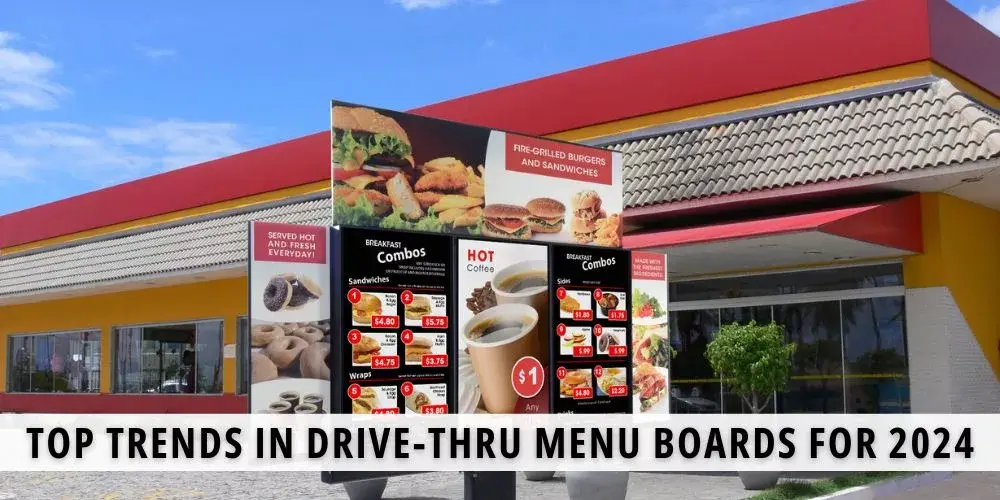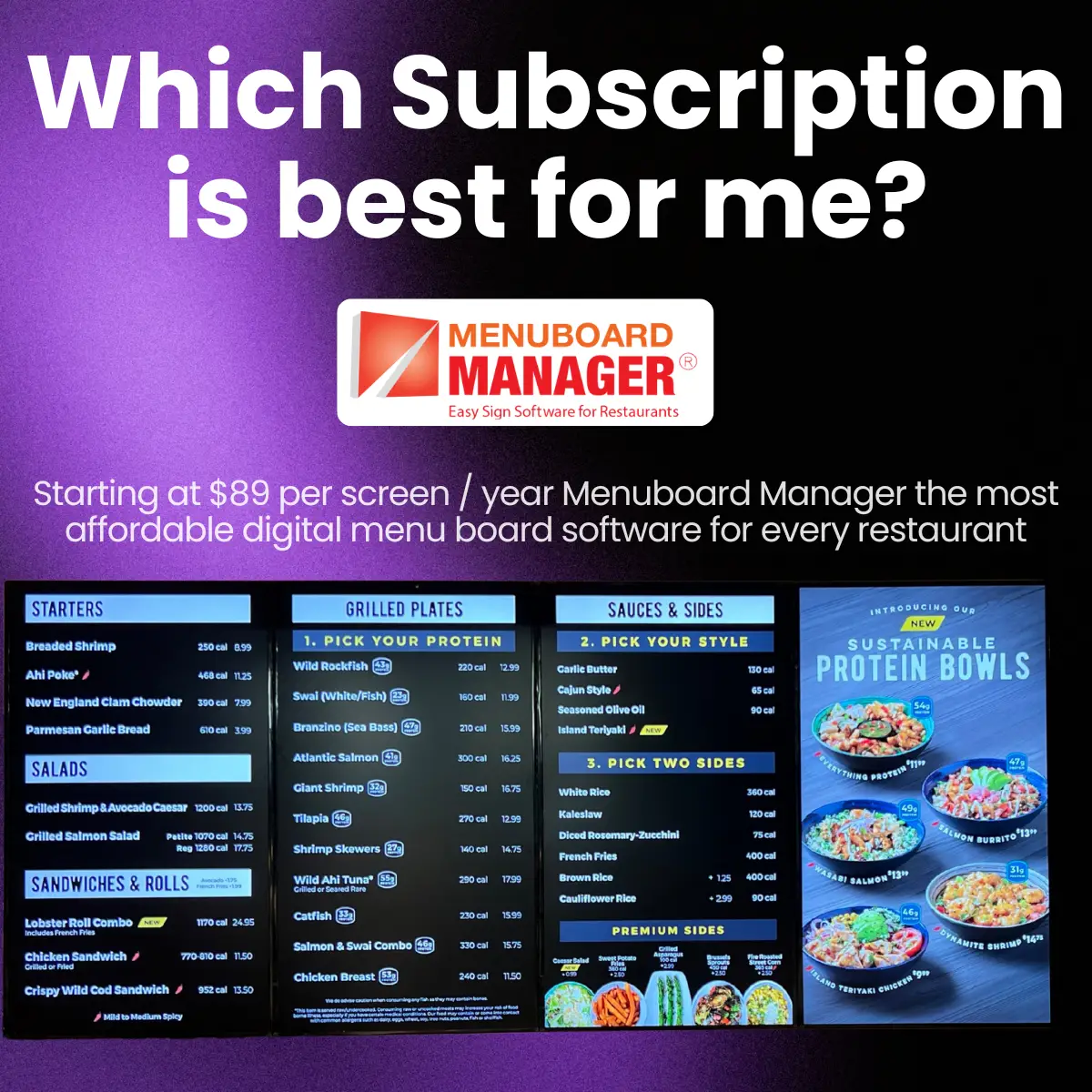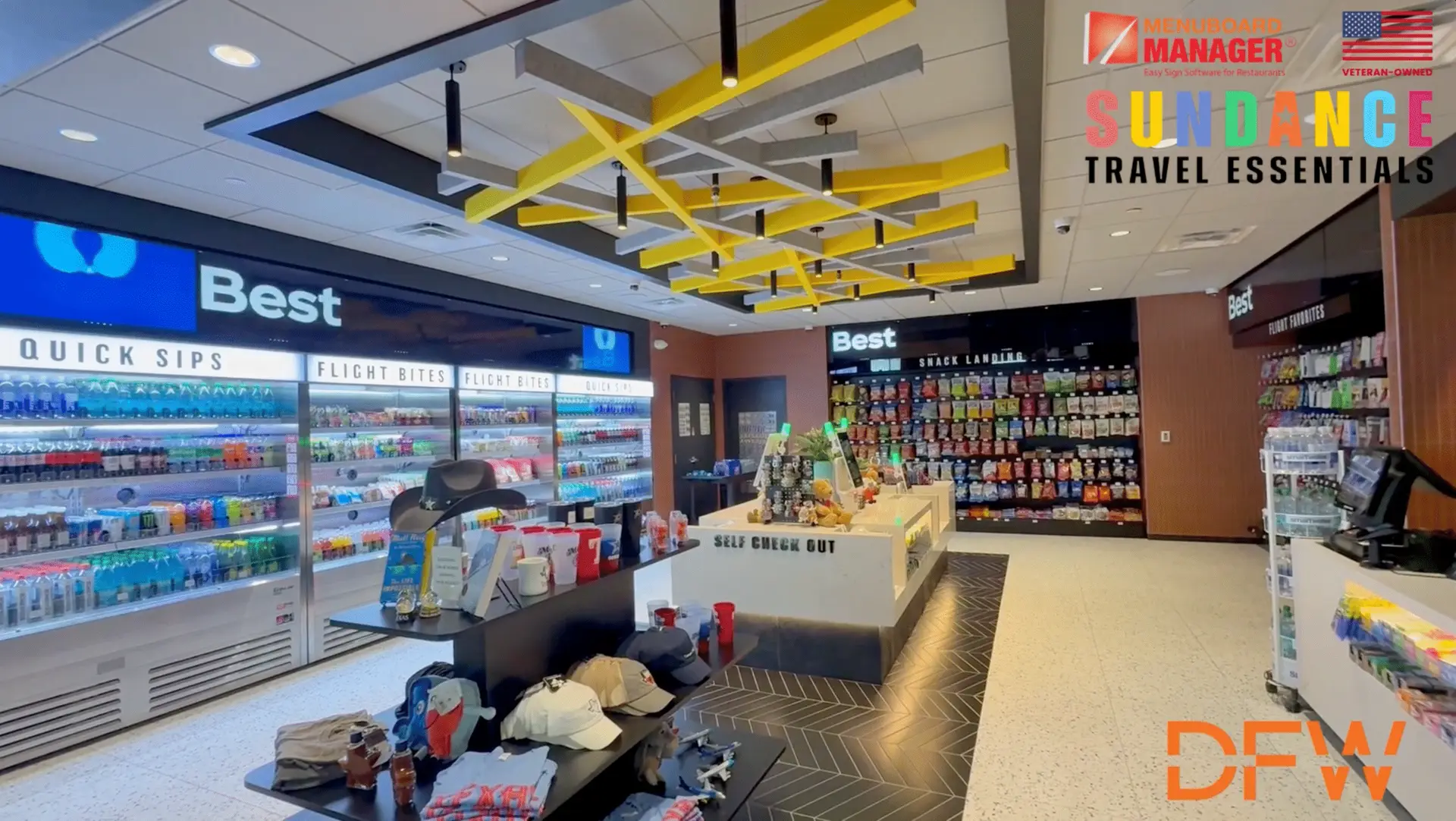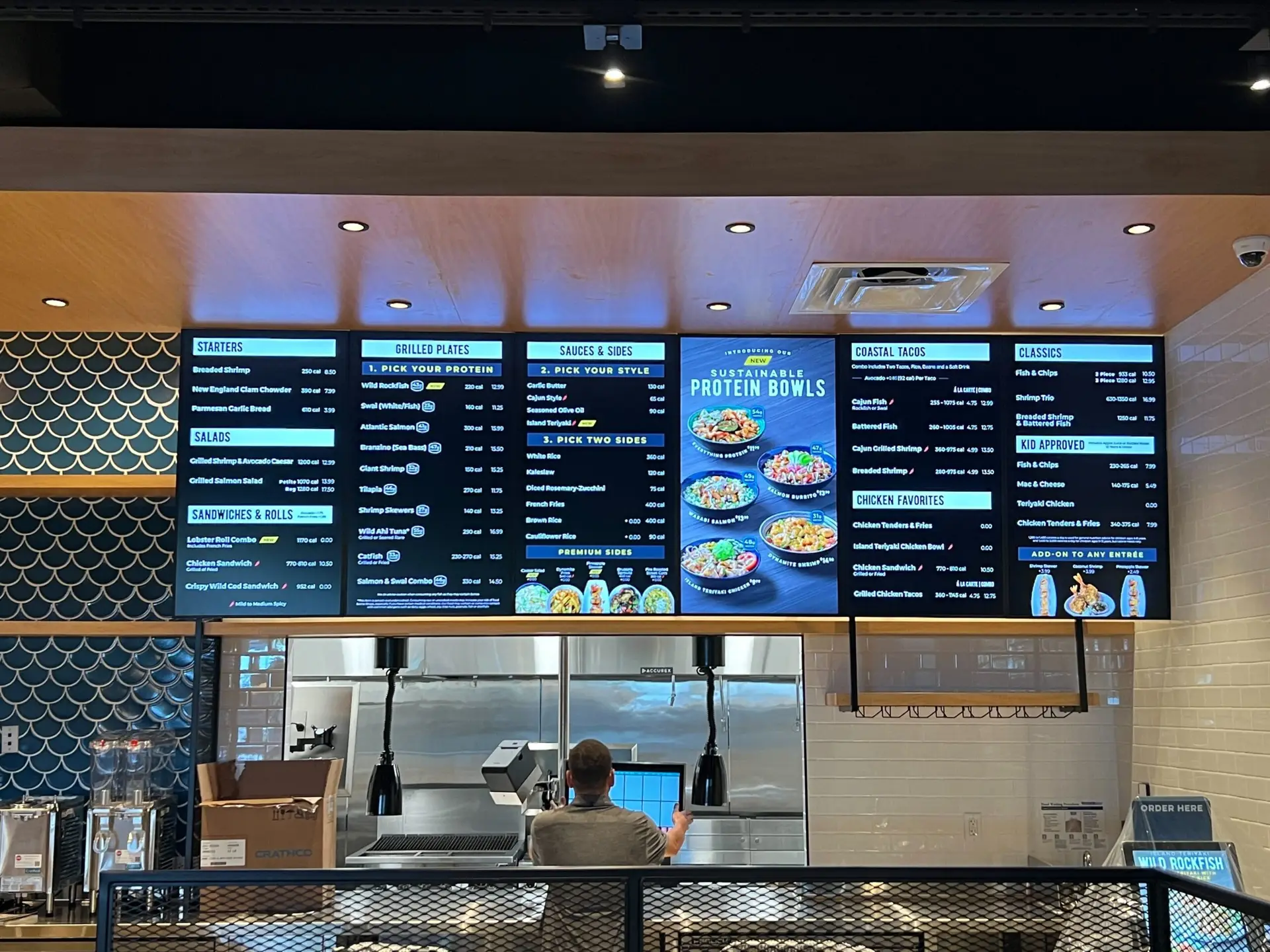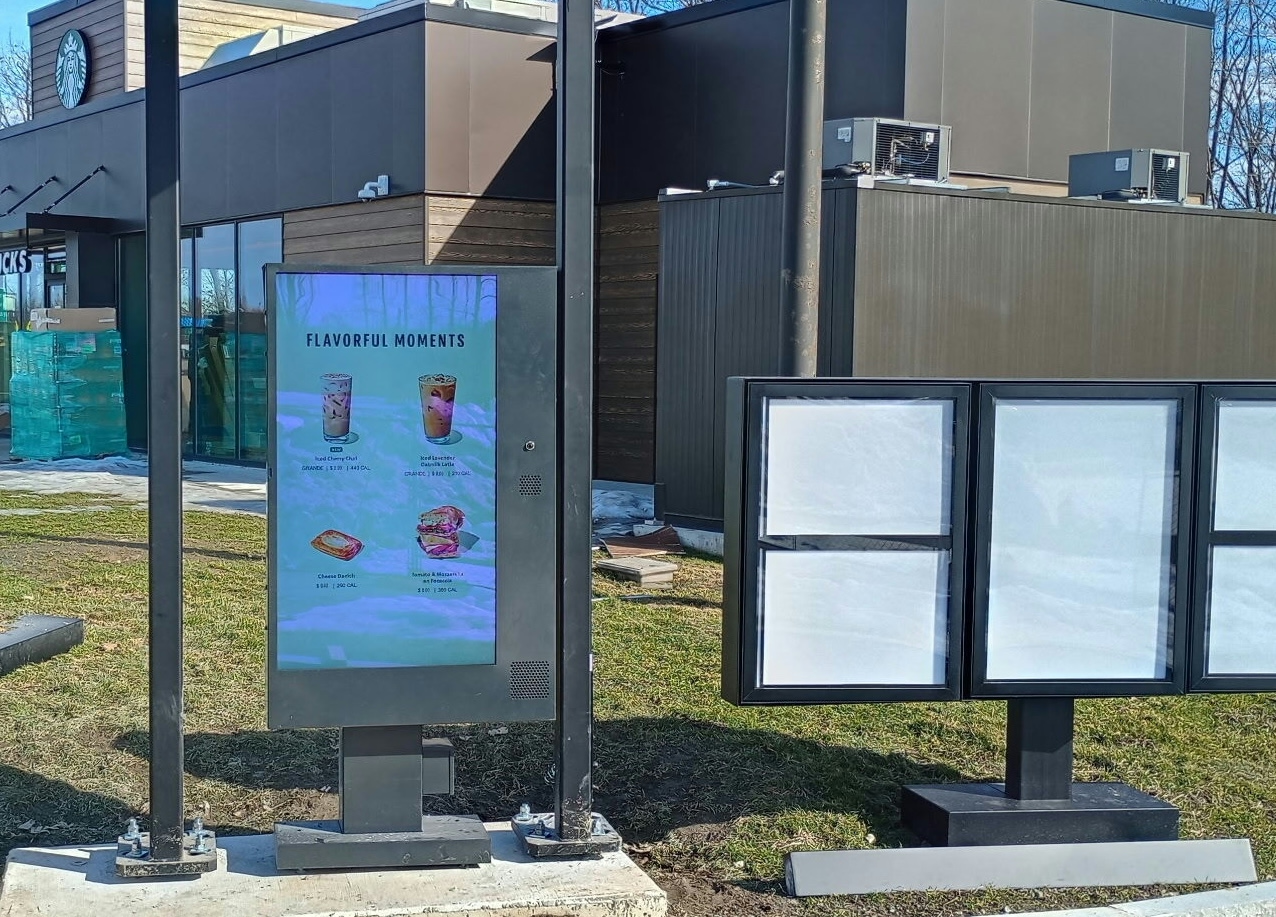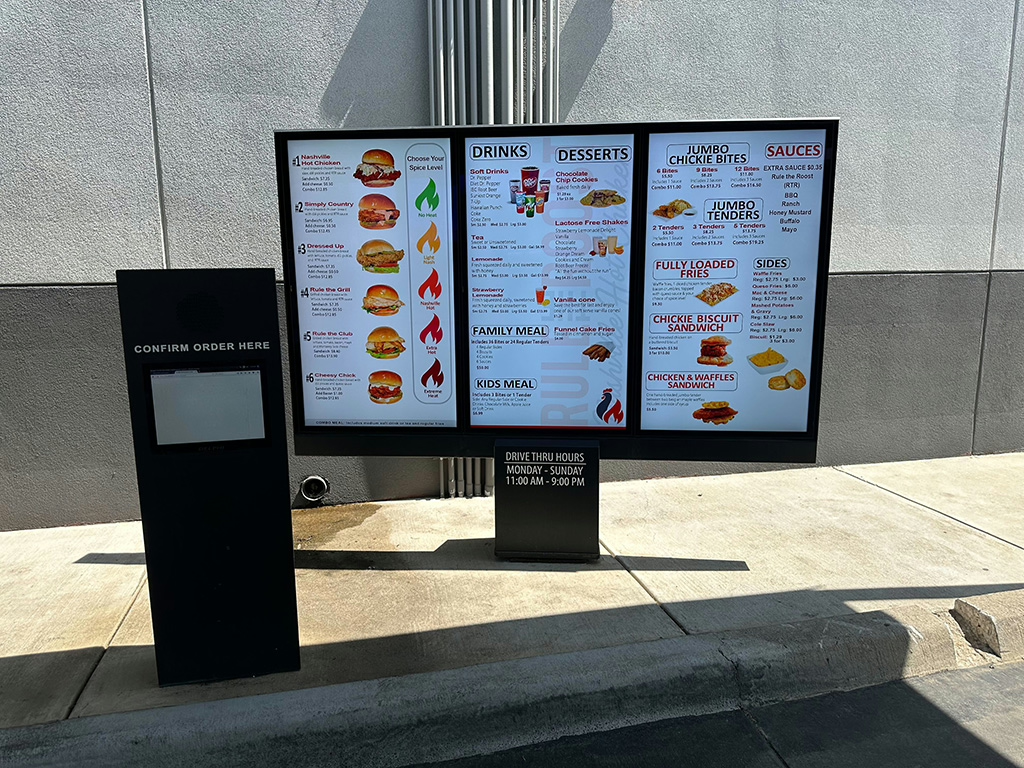Technological innovations, changing consumer behaviors, and sustainability will change the game in 2024. This blog discusses the top trends in drive-thru menu board experiences for the future, underlining some cutting-edge new developments and what they mean for restaurants.
Introduction to Drive-Thru Menu Boards
For decades, drive-thru menu boards have been part of a fast-food restaurant. They convey the food menu to customers quickly and easily without them getting out of their vehicles to counter-order food. Such boards have been static displays, most often illuminated to be visible at night.
Current State of Drive-Thru Menu Boards
According to experts, by the end of 2024, most drive-thru restaurant operators will replace menu boards with digital versions. Digital signage menu boards have since received high-resolution displays capable of projecting bright images and videos that move menu items in front of customers. They are easily updateable with remote access.
Emerging Technologies
Now, look at one of the most exciting trends in drive-thru menu boards: advanced technologies. Key among these critical technological advancements include:
Artificial Intelligence (AI)
One such example of AI-driven personalized customer experience is the drive-thru. It uses previous orders to individually suggest menu items based on a customer’s choices and flavors. This level of personalization enhances sales and satisfaction.
Voice Recognition
With voice recognition technology, consumers only need to tell the menu board what they will have, making ordering hands-free. It will enhance the speed of service and reduce errors, improving experiences for guests and restaurant staff.
Augmented Reality (AR)
AR technology can further drive home this experience of a drive-through by adding digital information to the real-life menu board. Customers can use their smartphones to have nutritional information or special promotions on their screens as they view the menu board.
Advanced Analytics
Advanced analytics on digital menu boards can capture information about customer interactions and eating habits. The data is utilized to optimize the menu board further by positioning the right items in front of high-visibility locations, promoting best sellers, and running focused promotions.
Integration with Mobile and Digital Platforms
Another major trend of 2024 is the integration of drive-thru menu boards into mobile and digital platforms. Most restaurants already have mobile apps that enable customers to order in advance and then pick up at the drive-thru. That seamless integration between the mobile app and the digital menu board can help speed up ordering and decrease wait times.
Mobile Ordering
Mobile ordering has increased, where customers can view menus, customize their order, and pre-pay. They show up at the drive-thru where their order will be waiting, reducing wait times and improving the overall experience.
Digital Payments
Most recently, digital payments at the lane have become increasingly accepted. Customers can now pass through faster and make their transactions more secure. Contactless methods, like Apple Pay and Google Wallet, further reduce the effort a customer has to create a transaction.
Loyalty Programs
The loyalty programs of many restaurants can be integrated into their digital menu board software, allowing customers to earn and redeem rewards right at the drive-thru. This step creates an incentive for repeat visits and gaining customer loyalty.
Sustainability
Sustainability has become a widely discussed issue in restaurants’ cores and has now reached drive-thru menu boards. In 2024, businesses will place more emphasis on making these boards eco-friendly.
Energy-Efficient Displays
Nowadays, digital menu board signage is made more energy-efficient by using much less power by integrating LED technology and other innovations. It will ease operational costs and negative environmental impacts.
Recyclable Materials
Increasingly, manufacturers are using recyclable materials to construct outdoor menu boards. This trend helps the industry reduce waste and incorporate sustainability.
Reduced Paper Usage
The major shift from static to digital menu boards significantly eliminates the need for prints. This reduction in paper usage fosters more sustainable operations.
Case Studies and Examples
Several restaurants are at the forefront of interactions with these new trends. Here are some of those:
McDonald’s
McDonald’s has led the wave in innovative drive-thru technology, including introducing AI-powered menu boards that suggest menu items based on weather conditions, day parts, and other factors related to customer preferences. The digital signage menu boards blend nicely with their mobile app, allowing seamless ordering.
Starbucks
Starbucks has opted for digital menu boards integrated with its mobile ordering application. Customers order and pay in advance to pick up their food and bypass the wait at the drive-through. The second point concerns Starbucks’ digital menu boards, intended to be as functional as possible while potentially cutting down energy consumption and being more environmentally friendly.
Taco Bell
High-resolution digital display screens at Taco Bell’s drive-thru menu boards feature vibrant pictures and movies of the menu items. They have also been fitted with voice recognition so consumers can use voice commands to order their food, enhancing ease and accuracy. Are you looking for the latest in drive-thru menu board technology? Look no further than Menuboard Manager. With contemporary digital signage solutions that integrate seamlessly with mobile platforms while caring about the future, Menuboard Manager will set your restaurant drive-thru experience apart with industry-leading technology and superior service.



